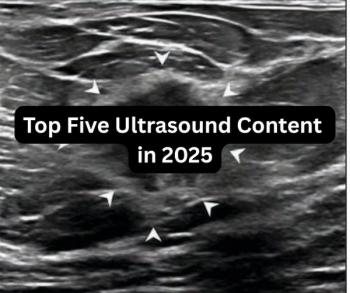
Precise and quick imaging allows whole-body screenings for suspected disease
Technological advances to CT and MRI allow radiologists to perform whole-body examinations in mere seconds. This has changed the way radiologists use whole-body imaging in diagnostics, according to Dr. Maximilian Reiser, director of the Institute for Clinical Radiology at the Ludwig-Maximilian University in Munich and incoming 2008 president of the European Congress of Radiology.
Technological advances to CT and MRI allow radiologists to perform whole-body examinations in mere seconds. This has changed the way radiologists use whole-body imaging in diagnostics, according to Dr. Maximilian Reiser, director of the Institute for Clinical Radiology at the Ludwig-Maximilian University in Munich and incoming 2008 president of the European Congress of Radiology.
"Previously, we had to define our area of inquiry precisely in advance, for example, pain in the upper abdomen," Reiser said. "Today, if we have any suspicions, we can check the entire body in an ultrashort time. That is a quantum leap forward, especially for systemic diseases whose effects can appear throughout the body."
Whole-body scanning has a variety of applications, from life-saving uses to others whose value should be questioned.
Just because a procedure is possible does not necessarily mean it is always sensible, Reiser said. He noted that the prevailing view in the U.S. is that a whole-body MR angiography exam is indicated for anyone who can afford it. This implies high costs and invites the commercial exploitation of fear.
"I am not in favor of wholesale screenings, but I do advocate the examination of people with certain risk profiles, such as a genetic affliction or diabetes," he said. "We have taken this approach in Munich and used total-body scanning to detect a significantly large number of vasoconstrictions in vessels supplying the brain and in leg arteries, which allowed us to treat them, I hope, in time."
Reiser cited the most important applications for whole-body scanning:
Polytrauma
After serious accidents in which several organ systems are or could be injured at the same time, a single whole-body exam shows bone fractures, spinal injuries, cerebral hemorrhaging, puncturing of the lung, pneumothorax, hemorrhaging in the pericardium, or ruptures and hemorrhaging of inner organs.
"In short, everything that can quickly lead to death if not detected," he said.
Cancer diagnosis
Whole-body scanning makes it possible for the first time to detect any formations of metastases wherever they occur, making it an indispensable tool, especially in follow-up treatment to chemo- and radiation therapy.
MR angiography
In the event of arteriosclerosis, MRA enables assessment of the entire vascular system, including the heart. This allows radiologists to determine the risk of stroke and cardiac infarction. It also brings to light infarctions that had previously gone undetected.
Inflammatory diseases
Psoriatic arthritis and other rheumatic diseases of the joints can be detected and completely diagnosed early on with whole-body scanning. Radiologists can detect inflammation foci even before patient complaints. Clinicians can start effective treatments, with tumor necrosis factor inhibitors for example, early to spare patients suffering and costs.
Virtual autopsy
A growing number of people are refusing to approve an autopsy on family members, thus threatening the medical community with the loss of what is ultimately an important instrument for quality assurance. In combination with ultrasound-guided biopsies of key organs, a complete CT and MR scan of a corpse delivers information of a precision similar to a regular autopsy and of even greater precision when it comes to changes in bone marrow and connective tissue.
Newsletter
Stay at the forefront of radiology with the Diagnostic Imaging newsletter, delivering the latest news, clinical insights, and imaging advancements for today’s radiologists.




























